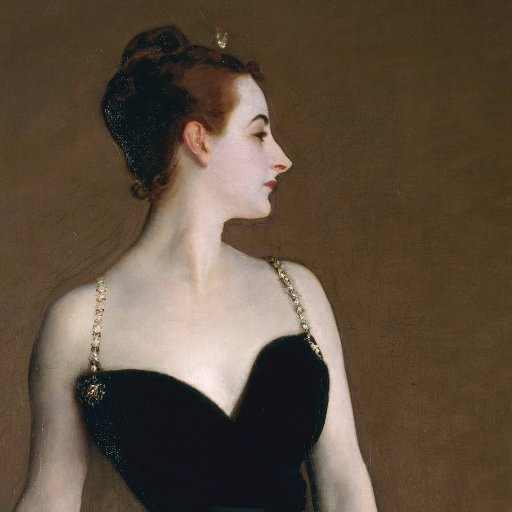The sitter for this 1904 work, Lady Helen Vincent, was a socialite and wife of a financier and diplomat. The portrait depicts her standing in a luxurious black satin evening gown against a Greek column and holding onto a long string of pearls. Read more!
https://t.co/vpEGA0xkMG
One of the most popular winter accessories for over 400 years, the muff is a tubular covering in which the hands are placed for warmth. Muffs could be made from a variety of materials including fur, feathers, and velvet. Read more!
https://t.co/CrsqNF5Sni
#fashionhistory
French painter Jean-Marc Nattier was particularly known for painting portraits of women in deconstructed versions of the period's trends. The 1750 Portrait of a Young Woman shows the sitter in a simple and non-ornate neoclassical dress. Read more!
https://t.co/vpqnMP3wb2
Lurex is a synthetic fiber made of aluminum-coated plastic which produces a metallic sheen that is also tarnish-proof. It was invented in 1946 and outpaced satin as an eye-catching fabric for stage costumes and accessories. Read more!
https://t.co/5jsPllHgPY
#fashionhistory
The Genoese Noblewoman painted by Anthony Van Dyck reflects early 17th century Genoian fashion trends, as well as Van Dyck’s skill in portraiture. Her clothing shows strong Spanish influence, especially in the color palette. Read more!
https://t.co/snwkFjZNjy
#arthistory
In the 1930s, fashion saw a profound influence from Hollywood. Men’s, women’s, and children’s styles were based on fashions seen on screen with stars who directly influenced trends. A return to conservatism after the Roaring Twenties also marked fashion.
https://t.co/H7HmDlQbeD
The fontage was an accessory of the late 17th century that consisted of a small oval cap that would be pinned to the back of the wearer's head. On top of the cap were wire frames that would then have materials draped on it. Read more!
https://t.co/8KgzvzAks4
The rise of fashion publications helped to popularize a trend for casual clothing during the 1780s. They also reflected the growing consumption of fashion in middle and working classes. Read more about this decade at the link below!
https://t.co/NneoMbtBuy
#fashionhistory
The 1770s was a time of transition in women’s dress, particularly for daywear. The robe à la française was reserved for formal wear which gave way to a new prominent ‘informal’ garment, the robe à l’anglaise. Read more at the link below!
https://t.co/6uz8YxqkWZ
#fashionhistory
Jean-Marc Nattier, an acclaimed 18th-century portraitist, was known for his mythological style, painting women in imagined costume that was only loosely based on fashionable trends, as is true in his 1750/60 Portrait of a Woman. Read more!
https://t.co/vpqnMOLUMs




















